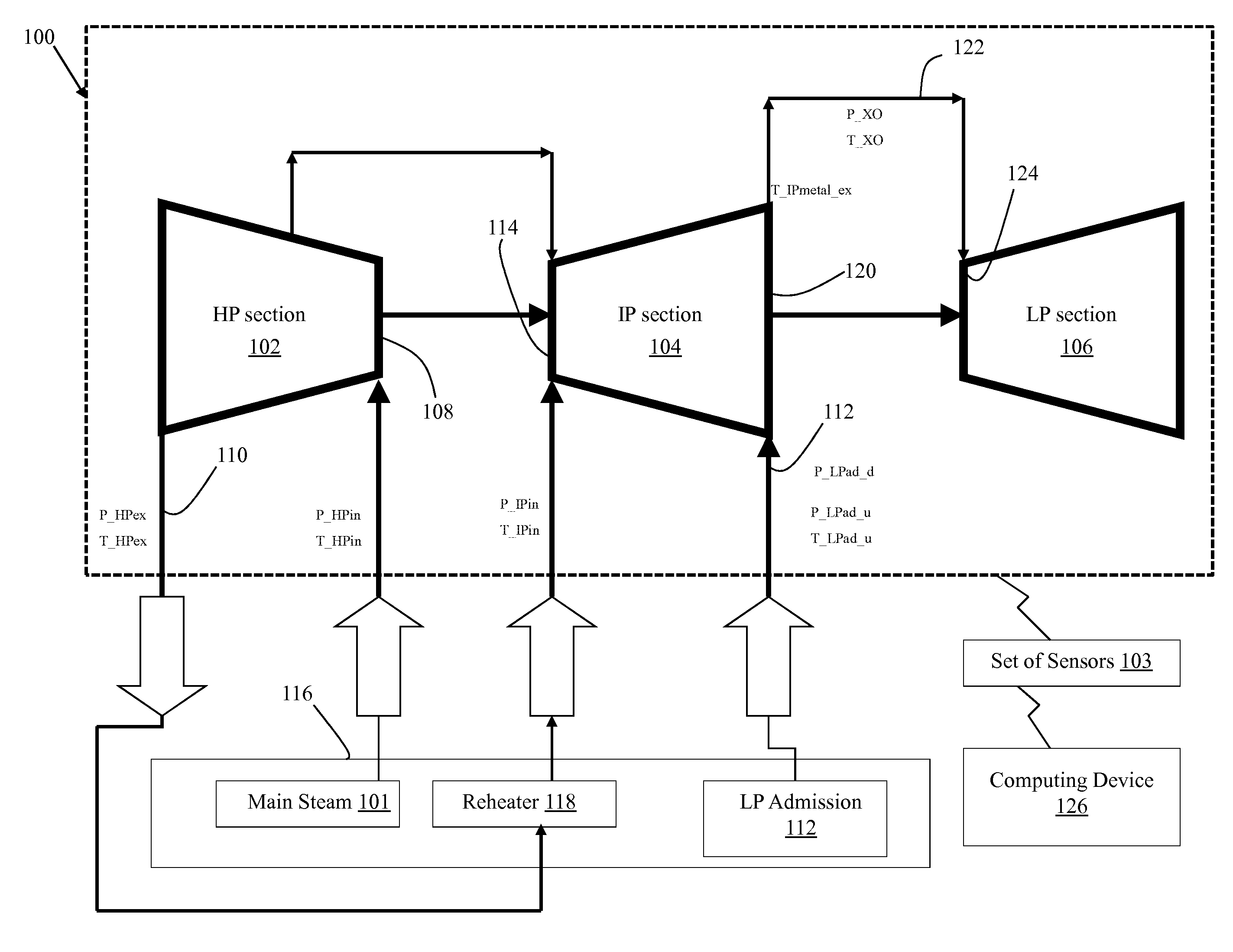Virtual sensor systems and methods for estimation of steam turbine sectional efficiencies
a technology of steam turbines and sensors, applied in the field of steam turbines, can solve the problems of insufficient precision instrumentation and resources, deformation of steam turbine performance over time, etc., and achieve the effect of estimating the efficiency of a section of steam turbines and estimating the efficiency of the section
- Summary
- Abstract
- Description
- Claims
- Application Information
AI Technical Summary
Benefits of technology
Problems solved by technology
Method used
Image
Examples
Embodiment Construction
[0012]The term “virtual sensors” is used herein to describe the systems and methods disclosed herein to estimate steam turbines' efficiencies when physical sensors are not available. The term “virtual sensors” refers to the use of physics-based models combined with nonlinear filtering techniques, to estimate the values that are not directly measured. These models capture the behavior of different components of the power plant, including all steam turbine sections, admission and crossover pipes, flow junctions, admission and control valves.
[0013]In one embodiment, the systems and methods disclosed herein are used to estimate the efficiency of an IP (Intermediate Pressure) section of a steam turbine. It is understood that the methodology discussed herein can also be applied to estimate efficiencies of other sections of a steam turbine, for example, a low pressure (LP) section or a high pressure (HP) section.
[0014]Referring to the FIG. 1, a schematic of certain sections of a steam turb...
PUM
 Login to View More
Login to View More Abstract
Description
Claims
Application Information
 Login to View More
Login to View More - R&D
- Intellectual Property
- Life Sciences
- Materials
- Tech Scout
- Unparalleled Data Quality
- Higher Quality Content
- 60% Fewer Hallucinations
Browse by: Latest US Patents, China's latest patents, Technical Efficacy Thesaurus, Application Domain, Technology Topic, Popular Technical Reports.
© 2025 PatSnap. All rights reserved.Legal|Privacy policy|Modern Slavery Act Transparency Statement|Sitemap|About US| Contact US: help@patsnap.com



